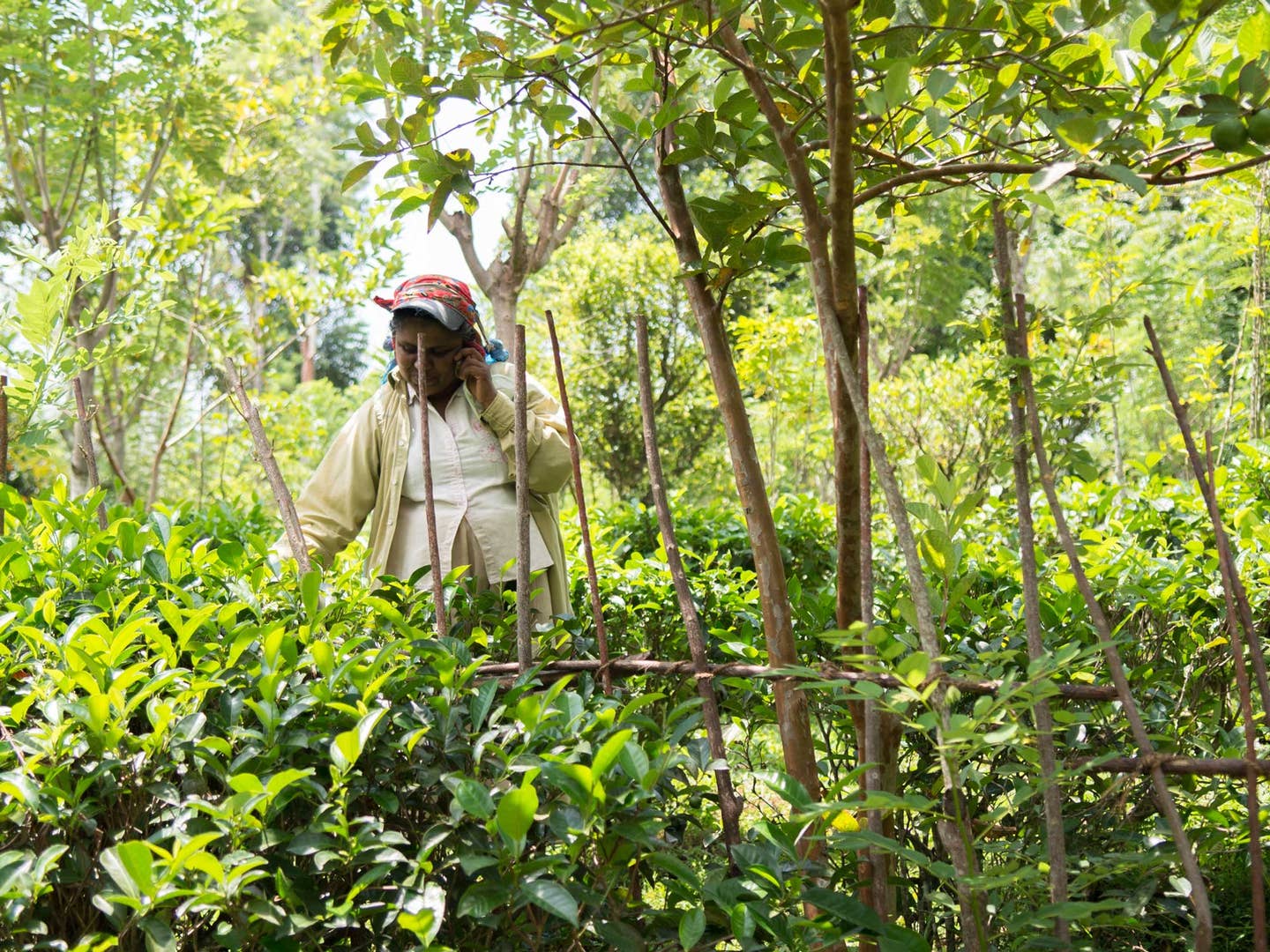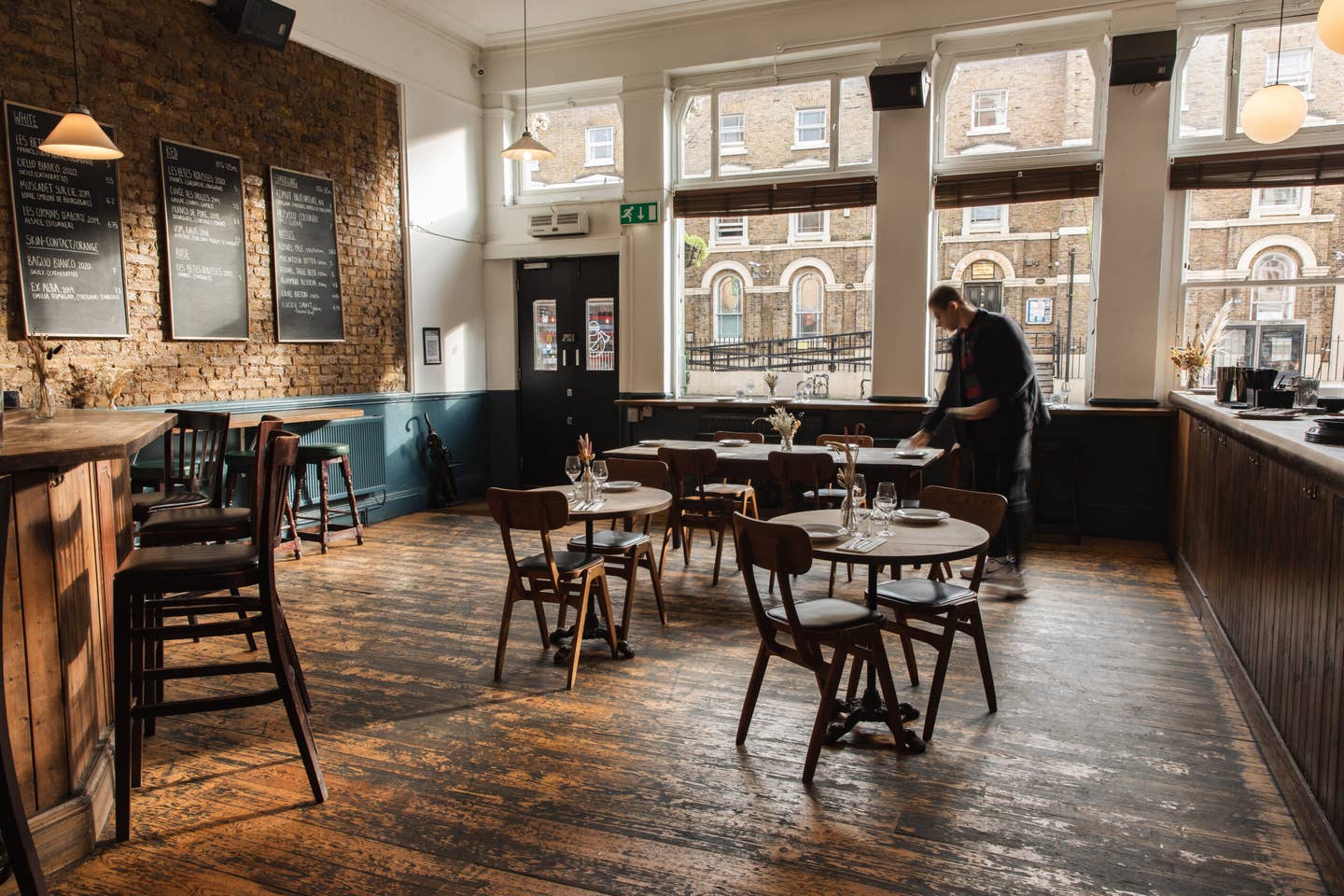
Drink the Excellent Tea From the Sri Lankan Estate Trying to Change the Brew Business
Amba isn’t another mass-market tourist trap; a free visit to these hill country fields is a chance to taste the best of the island’s celebrated tea
Sri Lanka, a small island off the southern tip of India, shimmers with natural beauty. Sandy beaches stretch forever and high green hills cascade toward the warm Indian Ocean. And from the Buddhist temples on high hills down to the sea-level remains of a Dutch colonial fort, verdant slopes show off the country’s most notable export.
Tea is big business in Sri Lanka, and the local tea trade sings a siren call to tourists. Guide books recommend trips to plantations. Tea the Sri Lankan way is a whole Thing to Experience, like the island's hulking crabs and lacy-edged hoppers. Unfortunately, most of the tea factories dotting the traveler's path leave a bad taste in the mouth—literally and metaphorically. What the guide books leave out—what I had to experience first-hand—is that most of that tea, broken down by clanking machines that wither, dry, and roll the leaves, just isn't that good. Neither are most of the formulaic plantation tours, or, for that matter, the way those plantations treat their workers.
But for those willing to go the extra mile (or three) to try the extraordinary, there is Amba Tea Estate. In 2010, as part of the redevelopment of the struggling farm, new owners brought on Beverly Wainwright, a former aid worker, to makeover the operation. With an eye toward social justice in a land steeped in political and ethnic tension, Amba blends high quality tea with the goal of improving lives of its employees.
Tea plantations are known for paying workers comically low wages while not investing in their growth. In 2014, Amba became the first tea estate in Sri Lanka to share revenue with all employees. It trains tea workers in multiple tasks, giving them new skills—and opportunities for better jobs down the line. A tour of the estate and stay at the bungalow offers visitors a genuine chance to learn about this remarkable beverage and the dramatic landscape that produces it.
The extra mile pays off. With its hand-rolled orange pekoe, Amba is making some of the best tea in Sri Lanka. Where most commodity tea is sold at bulk auction in the city of Colombo, Amba sells directly to specialty shops like Harney & Sons and Canton Tea Co. It has more in common with the single origin coffee you buy in hip cafes than a bag of Lipton.
I had no plans for my morning in the slow-moving hill station of Ella when I sat down for breakfast at Waterfalls, my hotel. I dug into my fresh buffalo curd (think the flavor of fresh cream with the texture of yogurt), but it was the mango-ginger jam I spread on my toast that changed the course of my day. When I asked Waterfalls’ proprietress about it, she wove me a tale of the tea estate “right nearby” that produced it, called Amba.
“Ten kilometers away” means very little when it comes to travel in Sri Lanka. Gazing out from the porch as she pointed, I wondered if I could walk across the valley faster than my driver could get me there (driving oneself as a foreigner in Sri Lanka can be near suicidal, and renting a car with a driver is almost the same price as the car alone). After an hour of bumpy driving down single-lane dirt switchbacks and just a few close encounters with buses, we arrived at Amba—thanks mainly to the magical combination of GPS on my phone, rough directions (turn at the bus stop, look for the sign for Misty Mountain Hotel), and dumb luck.
Tea leaves sunned themselves on screens atop the corrugated metal roof of the factory building at Amba. My plantation guide, Karuna (who’s also the field manager and the fifth-generation of a family working this estate), gently chided me for not removing my sandals when entering—shoes introduce dirt to the slow process of withering, the first step in converting the leaves into tea. Workers tend constantly to a wood-fired dryer. A machine rolls leaves, but only some of Amba’s products ever see the inside of it: Many of Amba’s higher grade leaves are rolled by hand, protecting the delicate buds, and limiting breakage for a more delicate and nuanced brew. From picking to packing, there’s hardly a moment when someone isn’t carefully handling the leaves.
If that sounds expensive, that’s because it is. The price difference between Amba and bulk tea nearly stupefies. An extended withering time and stringent quality standards means a price gap between $5 and $85 for 100 grams.
A sip of amber-hued, hand-rolled OP1 black tea (a grade based on the size and leaf used) buzzes with honey sweetness and a spark of citrus, even when I drink the tea neat, and it lacks the bitter bite of lesser Sri Lankan brews I choked down elsewhere. Even for an amateur taster, the difference is palpable on the tongue: smooth as the glimmering tea leaves from which it comes, refreshing as cool coconut water sipped straight from the fruit on a muggy Sri Lankan afternoon.
Picking tea leaves is thankless work, and it is—when done right—precise, skilled labor. Amba is the rare place on the island that produces green tea. While black tea can be mechanically sorted post-oxidizing, leaves for green tea need to be pre-sorted for top-quality leaves (just the top two leaves from a branch) prior to processing, since they don't go through the oxidation process. That means picking with nearly 100% precision. At a bulk tea facility, a manager told me that he aims for pickers to get 70% of the picked tea to be those top-notch leaves, but in reality, he’ll settle for 50%, because at least then he’s gathering in tea. When it comes to Sri Lankan tea, the best comes from the bud and top two or three leaves on a shoot, all at a Goldilocks stage of maturity: old enough that the bud is unfurled, not yet woody with age.
As I strolled through the tea fields at Amba, I paused to gaze at guavas and mangos, poke at the coffee cherries, and peel bark from a cinnamon tree. All are inter-planted among the rows of stately tea trees, serving a secondary function by helping fix nitrogen in the soil. (A stark contrast from the tea-bush monocultures of other plantations.) Amba also packages their cinnamon and coffee and makes jam from the fruit.
After wandering and tasting my way through the jam-making facilities, I sat down to a tasting in a century-old plantation house with white-washed walls and fat chairs made of old wood and leather. A tea expert came out and walked me through each of the teas and other brews: a black “thieves” tea (named because it was originally made from lower grade leaves taken home--stolen--by workers on the estates), white Champagne tea stars, a lemongrass tisane, and my favorite, the OP1: a light-bodied black tea hand-rolled into delicate needles that gently unfurl in the pot.
It was a luxurious experience—open to anyone who can find the estate, and, theoretically free—if you don’t count the $50 (US) that I spent on tea, jam, cinnamon, mustard, and other related gifts at the store on our way out. In return, I’d been free to take photos of everything from the nearby hills (including Lipton’s Seat, a tea country emblem) to the mango-ginger jam recipe that inspired the trip in the first place.
I left Amba with regret that I couldn't stay longer: I could have used a day to wander the estate in its entirety, another to hike the hill and watch the sunrise. A third to watch the jam-making, a fourth to see the hand-sewing of the pouches in which the tea is sold by residents at a nearby psychiatric hospital. And, perhaps, a week to sip tea and sink into the slow pace of life in the hill country.
Visiting Amba
Amba Estate is about 45 minutes from the town of Ella, which is well served by buses and trains. To get to the estate, there are buses from Ella, or you can hire a tuk tuk or driver. Call ahead to check for availability on the tours, though they are given most mornings at 11 a.m., at no cost.
What Else to Do in Ella
Barely more than a football-field length strip of shops, Ella mostly caters to tourists hopping off the train for a quick stop: the town itself offers little activity. But a breakfast of fresh woodapple juice and buffalo curd at the Curd Shop will set you up for a day of hiking to Ella Rock for panoramic views of tea country. Follow it up with a drive to (or a stop on your way back into Ella from Amba) Ravana Ella waterfalls—but hold on tight to your fruit: The monkeys won't hesitate to steal that mango right out of your hand.
Where to Stay
Amba also offers lodging on the estate for those in search of a very rural getaway. For more of a small-town feel, Waterfalls is in the town of Ella, about 45 minutes away.
Where to Buy Amba Estate Tea
Naomi Tomky is a Seattle-based food and travel writer. Learn more about her at The GastroGnome.
Keep Reading
Continue to Next Story










